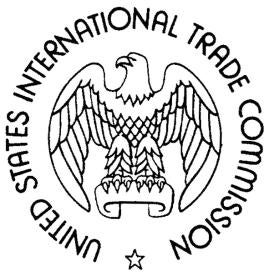On May 17, 2017, the International Trade Commission (ITC) reversed an ALJ’s ruling and found a violation of Section 337 in Certain Air Mattress Systems, Components Thereof and Methods of using the Same (“Certain Air Mattress Systems”), Inv. No. 337-TA-971, due to the importation of certain air mattresses, and components of air mattresses, by the named respondents. The public version of the Commission opinion has been released and provides future ITC litigants with guidance regarding the proper allocation of expenses for domestic industry purposes, and how the Commission views certain types of products for public interest consideration.
In Certain Air Mattress Systems, the complainant alleged a violation of Section 337 with respect to U.S. Patent Nos. 5,904,172 (“the ’172 patent”) and 7,389,554 (“the ’554 patent”), and sought to bar infringing air mattresses and certain components of air mattresses from being imported into the United States. The ’172 patent covers improvements to the valve enclosure assembly, called an “air controller,” that is integrated into each of complainants’ air mattresses and respondents’ products, while the ’554 patent covers improvements to air modules that improve posture support of the mattress. The initial determination (“ID”) found no violation of Section 337 due to, among other things, a lack of an economic domestic industry for both patents at issue. The ALJ also found that, despite its use in the medical industry, an exclusion order barring the Platinum 6000 (“P6000”) model air mattress from entering the United States was appropriate.
On review, the Commission flipped the ALJ’s determination relating to the economic prong of domestic industry for the ’172 patent and, in conjunction with other reversals related to claim construction and infringement, found that a violation of Section 337 had occurred. The Commission also affirmed the ID’s public interest analysis which rejected a request to exempt the P6000 product from any exclusion order.
Domestic Industry
The magnitude of complainants’ domestic industry expenditures was not in dispute, nor was their significance. However, the ALJ found that the complainant had not properly allocated its domestic industry expenses for the ’172 patent domestic industry products. Complainants had attributed 100% of their expenses to the domestic industry protected by the ’172 patent because every air mattress system they sold contained a valve assembly that practiced the ’172 patent. The ALJ disagreed with the appropriateness of this method as in his view the domestic industry products for the ’172 patent were the valve assemblies themselves rather than the air mattress systems that contained the valve assemblies. The ALJ held that because there was no allocation of expenses related to the valve assemblies themselves there was insufficient evidence of an economic domestic industry in articles protected by the ’172 patent.
The Commission reversed the ID and found that the complainants did satisfy the economic prong of the domestic industry requirement with respect to the ’172 patent. The Commission agreed with complainants and the OUII Investigative Attorney and held that the “articles” protected by the ’172 patent were complainants’ air mattress systems rather than just the air controller. The Commission noted that complainants sold air mattress systems containing the patented air controllers rather than just selling air controllers alone, and thus the air controllers were not “articles of commerce” unlike the air mattresses. The Commission further noted that the investigation title itself acknowledged that the products at issue were air mattress systems. The ’172 patent itself also envisioned a complete air mattress system, rather than just an air controller. Because of these facts, the Commission held that for the purposes of the ’172 patent an allocation of 100% of expenses was appropriate and the Commission found that a domestic industry existed for the ’172 patent.
Public Interest
The respondents’ P6000 air mattress is used in the acute care environment for wound management and care of ulcers, and Respondents argued that an exclusion order barring the P6000 air mattress from the United States would harm the health, safety, and welfare of the United States due to the use of the P6000 air mattress in hospitals. Despite this documented medical use, the Commission maintained the entry of an exclusion order barring imports of the P6000 model air mattress. The Commission noted that there was already an ample supply of the P6000 and competing air mattresses in the United States, as they were rented to hospitals rather than sold. Under the circumstances of that market, there would be no immediate shortage of supply. The Commission also noted that the ’172 patent was due to expire in the near future, so any remedial order would be short lived in any event.
Conclusion
After review, the Commission issued an exclusion order against all named respondents, barring entry into the United States of air mattress systems, components of air mattress systems, and methods of using such systems, that infringe the ’172 patent.





 i
i

